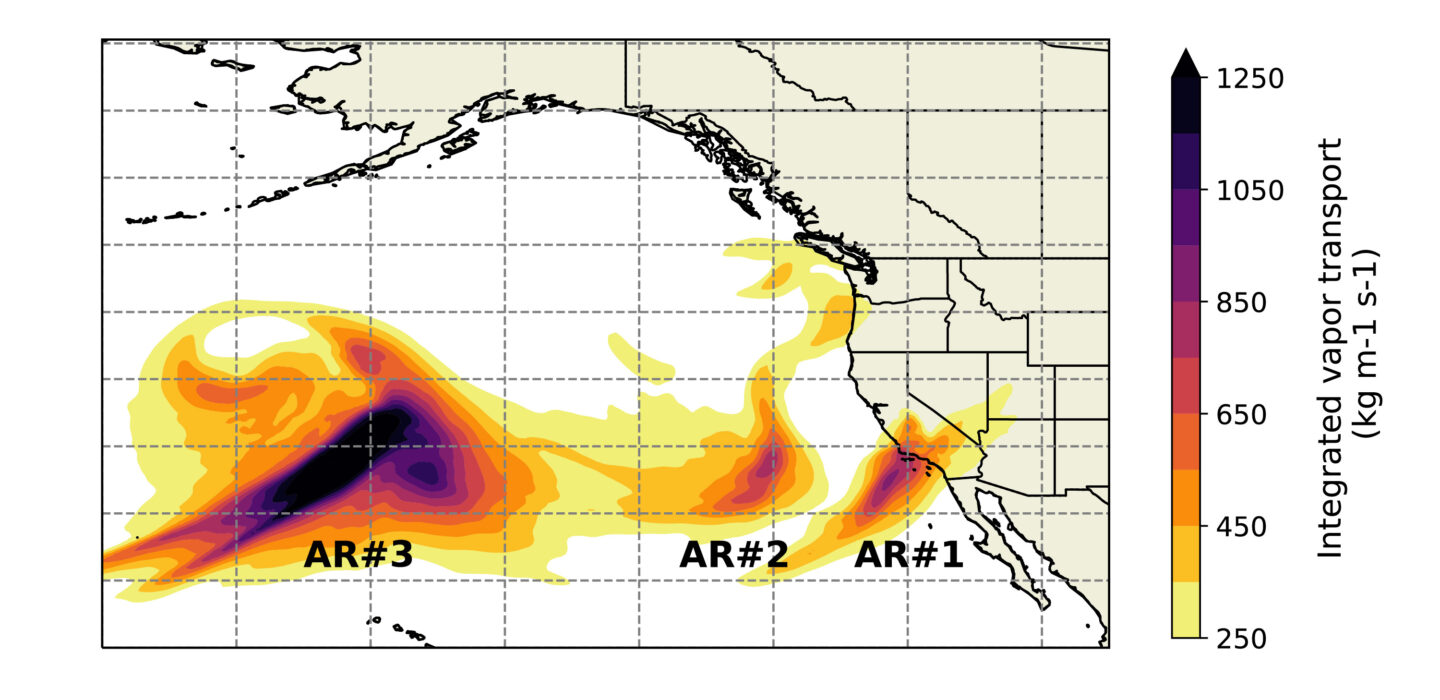In California's 2022-2023 winter season, the state faced nine atmospheric rivers (ARs) that led to extreme flooding, landslides, and power outages - the longest duration of continuous AR conditions in the past 70 years. Scientists at Lawrence Berkeley National Laboratory (Berkeley Lab) recently conducted a study using machine learning to better understand these complex weather systems, finding that more intense atmospheric rivers are more likely to occur in succession within a short period of time. A recent paper published in Communications Earth and Environment details their findings.
California's winter climate is largely defined by these atmospheric rivers - long, narrow regions in the atmosphere that transfer water vapor from the tropics, most commonly associated with the West Coast coming from the Pacific Ocean. When they make landfall (i.e. pass over land), they can release massive amounts of rain and snow. The catastrophic environmental and economic effects of AR's highlight the urgency of studying them, especially as Earth's climate changes.
"Atmospheric river events are likely to become worse with rising temperatures," explained Yang Zhou, Earth and Environmental Sciences Area (EESA) scientist and lead author of the publication. "By studying how and why more dense events occur, we can try and help California be better prepared."
"Atmospheric river events are likely to become worse with rising temperatures. By studying how and why more dense events occur, we can try and help California be better prepared."
- Yang Zhou
While atmospheric rivers are widely studied, the science behind back-to-back AR events have largely remained a mystery. Zhou, along with Berkeley Lab senior scientists William Collins and Michael Wehner, sought to investigate AR behavior using clusters - groups of AR landfalls that occurred in a specific region over a relatively short period of time. The team used machine learning to identify these clusters, investigating their characteristics, impact, and links to atmospheric circulations.
To do so, the researchers focused on how many AR "days," which occur when ARs fall over West Coast land and release precipitation, happened over the time period of the cluster. This is called the "cluster density." For example, a more dense five-day cluster would have four of the five days as AR days, while a less dense cluster would have two of the five days as AR days.
"Our findings show that more intense AR events are more likely to occur with more dense AR clusters," Zhou explained. "This means that not only is there less time available for the land to recover between events, but that the individual events themselves are more extreme. This makes the overall effect of densely distributed AR clusters even more severe."

The team also studied how cluster density affected the severity of consequences on the land, showing that more dense clusters result in more flooding and damage to infrastructure and ecosystems. This is because the land has less time to recover as heavy rainfall continues to occur with shorter breaks. They also investigated how atmospheric patterns affect clusters, finding that specific atmospheric conditions relating to pressure and winds were more favorable for dense clusters to occur in a warmer world.
Knowing the atmospheric conditions that typically result in dense AR clusters, and that extreme AR events are more likely to occur in AR clusters, can help inform scientists who predict these events years and decades into the future and communities trying to prepare for them.
Analysis was performed at the National Energy Research Scientific Computing Center (NERSC), a DOE Office of Science user facility at Berkeley Lab. The work was supported by the U.S. Department of Energy's Office of Science.






